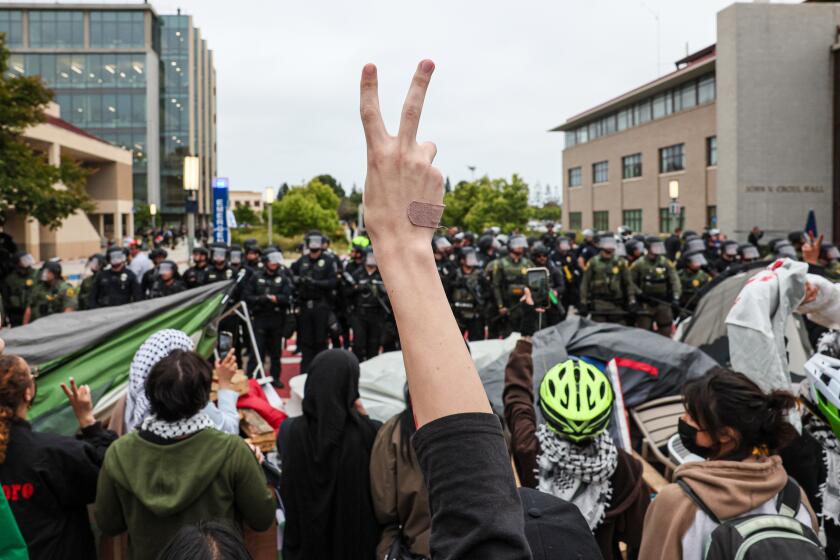California Supreme Court allows challenges to Breathalyzer results
Accused drunk drivers now have more ammunition for challenging Breathalyzer findings as a result of a unanimous ruling Thursday by the California Supreme Court.
The ruling is expected to make drunk-driving cases more complicated and possibly more difficult to prosecute, lawyers said. Courts in two other states, Arizona and Vermont, have reached similar conclusions.
Under the law, a suspected drunk driver can submit to either a blood test, which measures the amount of alcohol in the blood, or a breath test. Alcohol levels in a breath sample are converted mathematically to derive a blood-alcohol percentage. In California, a person is legally drunk when his or her blood-alcohol level is 0.08% or higher.
The standard formula for converting breath results to blood-alcohol levels is not accurate for everyone, however, and can vary depending on an individual’s medical condition, gender, temperature, the atmospheric pressure and the precision of the measuring device, the court said.
“The question is whether a defendant who has a blood-alcohol concentration of 0.08% or more measured by breath is entitled to rebut that presumption that he was under the influence” in certain cases, Justice Carol A. Corrigan wrote. The court’s answer was yes.
Even though experts say the standard ratio used to derive a blood-alcohol concentration from breath generally approximates or even underestimates the amount of alcohol the driver consumed, they also agree that Breathalyzer results may sometimes overestimate the amount of alcohol in the blood.
Thursday’s ruling permits defendants in some cases to challenge those results based on mathematical ratios.
“Evidence casting doubt on the accuracy of the breath-to-blood conversion ratio is just as relevant as other evidence rebutting the presumption of intoxication from a breath test result, such as evidence that the defendant had a high tolerance for alcohol or performed well in field sobriety testing,” Corrigan wrote.
San Bernardino County Deputy Dist. Atty. Mark A. Vos, who prosecuted the case before the court, said the ruling was “going to make DUI trials a little more difficult to put on” because more technical evidence will be permitted.
“The numbers are going to be flying back and forth in DUI trials, so prosecutors are going to have to adapt,” Vos said.
Jamie L. Popper, the appellate defense lawyer in the case, said the ruling will ensure that juries have the information they need to judge a case.
“The situation currently is that juries are led to believe that when a person blows into the breath test, the blood-alcohol measure that breath test gives is a fact, when all a breath test is is a measure,” Popper said.
The ruling came in an appeal brought by Timmie Lance McNeal, who will not benefit from the decision because the court concluded that the jury would still have convicted him even if he had been permitted to challenge the conversion formula.
McNeal, like most drunk-driving defendants, was charged under two separate laws. One of them says a person is presumed to be intoxicated if his or her blood-alcohol level is 0.08% or higher, regardless of how it was measured.
The jury failed to convict McNeal under that law after evidence was presented that the Breathalyzer may not have been working properly. Of five breaths, the device was able to produce only two samples suitable for testing. Both registered a blood-alcohol level of 0.10%.
But the jury still convicted him of driving under the influence under a law that does not depend on blood-alcohol levels. That law requires only proof that a defendant’s ability to drive safely was impaired by alcohol consumption. The blood-alcohol measure is evidence, but not proof, of intoxication.
--
More to Read
Sign up for Essential California
The most important California stories and recommendations in your inbox every morning.
You may occasionally receive promotional content from the Los Angeles Times.











